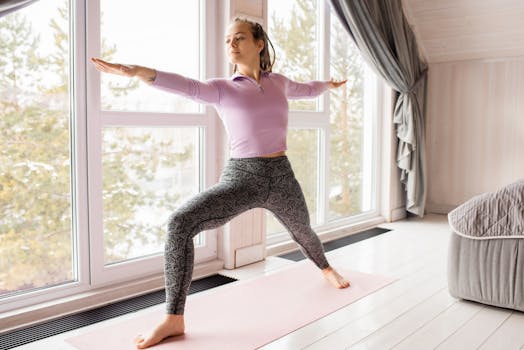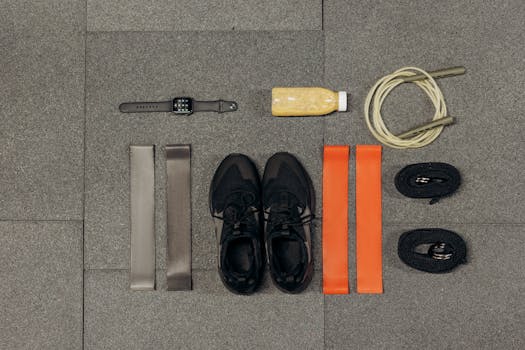
Introduction to Strength Training at Home

Strength training is an essential aspect of fitness that helps build muscle, increase metabolism, and improve overall health. This guide is specifically tailored for beginners looking to start their strength training journey at home. By focusing on bodyweight exercises and minimal equipment, anyone can embark on a successful strength training program.
Understanding Strength Training

Strength training involves using resistance to induce muscular contraction, which builds strength, endurance, and size of skeletal muscles. The primary goal is to enhance muscle performance and physical appearance. For beginners, it’s crucial to understand the fundamentals before diving into specific routines.
Benefits of Strength Training
- Improves muscle tone and strength
- Enhances metabolic rate
- Boosts bone density
- Reduces the risk of injury
- Improves mental health and mood
Getting Started with Strength Training at Home

Before starting any strength training program, it’s important to assess your current fitness level, set realistic goals, and create a suitable workout routine. Here are some steps to help you get started:
Assess Your Fitness Level
Understanding your current fitness level will help you choose the right exercises and intensity. Consider factors such as your weight, previous exercise experience, and any injuries.
Set Realistic Goals
Setting achievable goals will keep you motivated. Whether it’s losing weight, gaining muscle, or improving endurance, make sure your goals are specific and time-bound.
Create a Workout Routine
Design a balanced workout routine that includes a mix of strength training exercises targeting all major muscle groups. Aim for at least 2-3 days of strength training per week.
Essential Equipment for Home Strength Training

While bodyweight exercises are effective, having some basic equipment can enhance your workouts. Consider investing in:
- Dumbbells
- Resistance bands
- Exercise mats
- Kettlebells
- Stability balls
Sample Strength Training Exercises for Beginners

Here are some beginner-friendly exercises that you can incorporate into your workout routine:
Bodyweight Squats
This exercise targets your quadriceps, hamstrings, and glutes. Stand with your feet shoulder-width apart, lower your body by bending your knees, and return to standing.
Push-Ups
Push-ups work your chest, shoulders, and triceps. Start in a plank position, lower your body until your chest nearly touches the floor, and push back up.
Lunges
Lunges help build lower body strength. Step forward with one leg, lowering your hips until both knees are at a 90-degree angle, then return to the starting position.
Plank
The plank is a great core-strengthening exercise. Hold your body in a straight line from head to heels, keeping your core engaged.
Creating a Balanced Workout Plan

A balanced workout plan should include a variety of exercises focusing on different muscle groups. Here’s a simple weekly structure:
- Day 1: Upper Body (Push-ups, Dumbbell Press, Rows)
- Day 2: Lower Body (Squats, Lunges, Deadlifts)
- Day 3: Core (Planks, Bicycle Crunches, Leg Raises)
- Day 4: Rest or Light Cardio
- Day 5: Full Body (Combination of all previous exercises)
Safety Tips for Strength Training at Home

Safety should always be a priority during strength training. Here are some tips to keep in mind:
- Warm up before starting your workout.
- Use proper form to avoid injuries.
- Listen to your body and rest as needed.
- Gradually increase weights and intensity.
- Stay hydrated throughout your workout.
Conclusion

Strength training at home is a convenient and effective way to improve your fitness. By following this beginner’s guide, you can create a structured routine that fits your lifestyle. Remember to stay consistent, set achievable goals, and enjoy the journey towards a stronger you.





